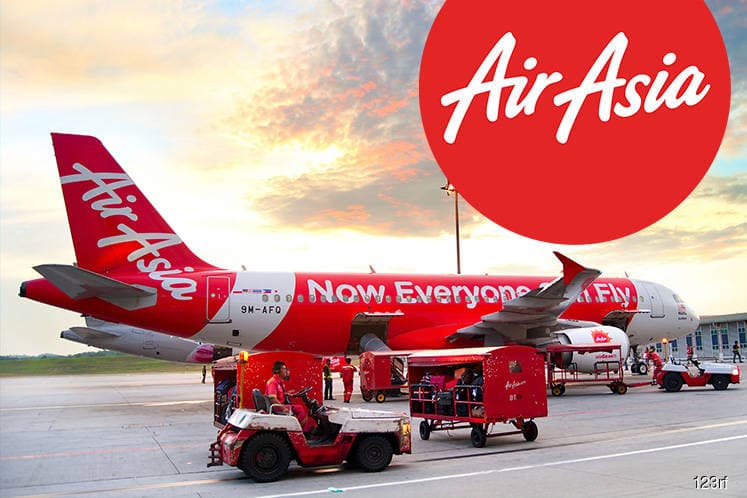
This article first appeared in The Edge Financial Daily on June 26, 2019
AirAsia Group Bhd
(June 25, RM2.74)
Maintain buy with an unchanged target price (TP) of RM3.35: AirAsia Group Bhd has upsized its future fleet deliveries, converting 253 orders for the Airbus A320 NEOs aircraft to the larger A321 NEOs. To date, AirAsia has placed orders for 239 A320s (with 224 delivered) and 353 A321 NEOs (first delivery by end-2019). We are positive on the conversion, as the larger A321 NEOs will enable AirAsia to offer higher capacity in response to ongoing strong demand across its network and limitation on airport landing slots. A321 NEO boasts a capacity of up to 240 seats configuration (versus current 180-186 seats in A320). Currently, AirAsia has been achieving high load factor rate of 85-90% and occasionally chartering in larger A330s (377 seats) from AirAsia X Bhd (AAX) during peak period to meet high passenger demand. Furthermore, A321 NEOs will enable further cost savings (per seat basis) and ensure AirAsia’s leading competitiveness in the market.
Based on the latest release of consultation paper by Malaysian Aviation Commission (Mavcom), AirAsia seems to be slightly negatively affected for the required higher return for Malaysia Airports Holdings Bhd (MAHB) under the proposed regulatory asset base (RAB) structure. Based on MAHB’s proposal (pre-tax weighted average cost of capital [WACC] of 12.7%, which is higher than Mavcom cap at 10.88%), AirAsia will be affected by the higher passenger service charge (PSC) tariffs (exception to the lower klia2 international PSC tariff) and higher aircraft landing and parking charges in 2020. On the other hand, based on Mavcom’s proposal (pre-tax WACC of 10.88%), the higher klia2 PSC tariffs will be partially offset by the lower PSC tariffs in other airports. We believe that the negative impact will be cushioned by AirAsia’s continuous improvement in cost structure and its ability to price in higher costs to its large passenger base of 35 million passengers per annum (Malaysia AirAsia only). Over the longer term, we opine that AirAsia tends to benefit from the cap in the airport charges under the RAB structure (versus guaranteed rate increase based on inflationary rate in every five years under current operating agreement).
Competition within the airline industry has never been dull, as existing regional full-service carriers struggle to protect their market shares while low-cost carriers (LCCs) strive for market shares. Recently, China Eastern Airlines announced its plan to reposition its China United Airlines subsidiary (currently a local LCC) as a regional LCC expanding into Japan, South Korea and Southeast Asia. Within three to five years, China United will have a fleet of about 80 aircraft (currently 51 Boeing 737s), enough to handle multiple new destinations outside China. We note that China United is the first China-based LCC to officially announce to expand network into Southeast Asia market. We believe AirAsia has the leading advantage in terms of market branding, price competitiveness, innovation and cost structures, which have been proven over the years, with its ever-expanding fleets, increasing market share and earnings growth.
Innovation and flexibility are the keys to AirAsia’s success. AirAsia management continues to adapt to new technologies and ideas to keep the low-cost carrier ahead of its competitors. Leveraging on the group’s strengthening core airline business and integration of digitalisation, management is creating new business platforms to build new revenue stream, expand user base and improve user engagement and experience, which will eventually further enhance the group’s earnings. Three key business platforms to be introduced or enhanced are (1) AirAsia.com website; (2) BIGPay (digital banking and money application); and (3) Teleport (cargo and logistics).
Post AirAsia’s special 90 sen dividend (ex-date July 30, 2019), we believe the management has the ability to sustain its target for a special dividend for every two years, as the group still has maturing assets to be monetised, including MAA and fleet deliveries for the next two years (amounting to 50 A320s and A321s). The investments in the new business platforms may take five years to mature before any potential monetisation exercise.
Our unchanged sum of parts-derived TP of RM3.35 takes into account the attractive special dividend payout of 90 sen per share. We remain positive on AirAsia’s outlook given its high load factors as well as higher yield and ancillary or other income. — Hong Leong Investment Bank Research, June 25